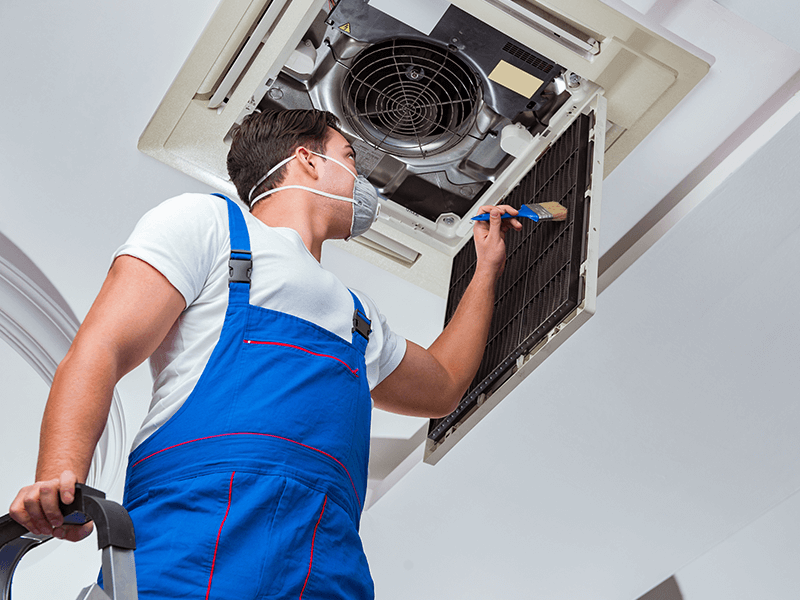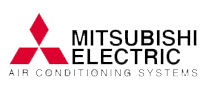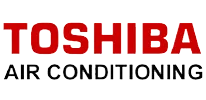
Learn how Combining AC & Airflow Fans Boosts Efficiency

With rising energy prices, increasing environmental awareness, and government carbon targets, sustainability is no longer a buzzword — it’s a necessity. For gyms in the UK, which are high-traffic spaces with considerable energy demands, sustainable cooling is one of the easiest and most impactful ways to cut costs while reducing your carbon footprint.
Let’s understand how combining air conditioning (AC) with airflow fans creates a powerful, energy-efficient cooling system and how UK gym owners can implement this approach practically and cost-effectively.
Why Cooling Is Essential – Even in the UK
It’s a common misconception that British gyms don’t need serious cooling due to the moderate climate. However, internal heat is generated from:
- Dozens of active bodies
- Cardio machines
- Lighting systems
- Poor ventilation in some older buildings
…can make gym interiors uncomfortable, even in spring or autumn.
According to Gov.Uk, gym usage peaks between 6-9 AM & 5–8 PM, especially during weekdays, when cooling demand is highest. A lack of proper ventilation or climate control not only reduces workout comfort but can also increase humidity levels, risking mould growth and poor indoor air quality.
What Is Sustainable Gym Cooling?
Sustainable cooling refers to practices and technologies that maintain comfortable indoor temperatures while minimising energy consumption and environmental impact.
This can be achieved by:
- Combining mechanical cooling (AC) with passive solutions (fans, ventilation)
- Upgrading to energy-efficient systems
- Smart usage scheduling
- Maximising natural airflow where possible
Moving air helps evaporate sweat faster, making people feel cooler even if the air temperature hasn’t changed. With proper HVAC maintenance, you can optimise airflow and raise your AC temperature by 1–2°C while still maintaining comfort, reducing energy usage by 6–8%.
How to Implement Sustainable Cooling in UK Gyms
1. Conduct an Energy Audit
Start by understanding your current cooling setup:
- Where are the hotspots?
- When does the gym get the warmest?
- Which rooms have poor air circulation?
Consider hiring an HVAC consultant or using a free carbon calculator (like the Carbon Trust SME tool) to evaluate your cooling energy use.
2. Use Zoned Cooling
Don’t cool the entire facility uniformly. Split the gym into zones:
- High-intensity zones (cardio, spin studios) – use a combination of AC and fans.
- Weight training areas – often need less cooling, so airflow fans may suffice.
- Reception/lounge areas – prioritise comfort with moderate AC.
Zoning helps ensure that cooling is provided only where and when it’s needed.
3. Upgrade to Energy-Efficient Equipment
- Use inverter-based AC systems – these adjust power usage based on room conditions.
- Install HVLS fans – High Volume Low Speed fans can move large amounts of air quietly and efficiently.
- Smart thermostats & timers – automate operations and reduce human error.
|
Feature |
Traditional AC Only |
AC + Airflow Fan Hybrid |
|
Cooling Speed |
Fast |
Moderate |
|
Energy Use |
High |
15–25% lower |
|
Air Circulation |
Low |
High |
|
Operating Cost |
Expensive |
Balanced |
|
Member Comfort |
Varies |
High |
|
Sustainability Score |
Low |
High |
4. Schedule Smartly
Use gym usage data to determine when systems should run at full capacity. For example:
- Early mornings and late nights may require just airflow fans or passive ventilation.
- Peak hours (5–8 PM) may warrant full AC + fans.
Bonus Tip: Encourage gym-goers to visit during off-peak times by offering discounts or loyalty points. This flattens cooling demand over the day.
5. Improve Building Insulation & Ventilation
Efficient cooling isn’t just about machines — it’s also about retaining cool air. Seal gaps in doors and windows, use window films to block UV rays, install roof insulation to reduce heat transfer, and consider adding louvre or trickle vents for passive air exchange. While these upgrades improve your building’s thermal envelope year-round, timely HVAC repair ensures your system operates efficiently alongside these structural improvements, keeping you comfortable in both summer and winter.
6. Educate Staff & Members
Simple behaviour shifts go a long way:
- Encourage staff to turn off unused equipment
- Avoid blocking fans or vents with furniture
- Use smart signage to inform members about your sustainability efforts
Benefits Beyond Cooling
Here’s why this hybrid approach pays off:
- Up to 25% lower cooling costs
- Longer equipment lifespan (less strain on AC units)
- Improved air quality and comfort
- Enhanced brand reputation for sustainability
- Compliance with the UK’s Net Zero goals
Final Thoughts
In the UK’s evolving energy landscape, sustainable gym cooling isn’t just smart — it’s strategic. Combining AC with airflow fans allows gyms to create a comfortable environment, cut costs, and meet environmental targets without sacrificing performance.
Whether you’re managing a boutique fitness studio or a large chain facility, now is the time to adopt a smarter, hybrid approach to gym cooling.








